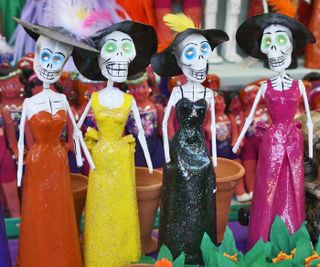
Catrinas de papel maché (death-mocking figures made of paper maché). The catrín (male figure) and catrina (female figure) come from the late 19th-early 20th Century drawings by political cartoonist José Guadalupe Posadas. Posadas drew his skeletons dressed in finery of the Porfiriato (the era between 1875-1910 when Porfirio Díaz, a Francophile, ruled Mexico) to demonstrate the pointlessness of vanity in life that, in the end, covers nothing but bones.
Día (y Noche) de los Muertos (Day or Night of the Dead) is celebrated in Mexico each year on November 1 and 2. It's a festival both solemn and humorous, both sacred and profane: it's a wildly and uniquely Mexican fiesta (party), although other Latin American countries–Guatemala, Honduras, and Perú, among others–celebrate the dates in other ways.
Called Día de los Muertos in most of Mexico, in Michoacán the fiesta is known as Noche de los Muertos. The traditional celebrations in Purhépecha pueblos (indigenous towns) near Morelia are among the most famous in Mexico.
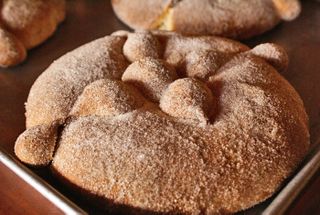
Everywhere in Mexico, it's traditional to eat pan de muertos (bread of the dead) before, during, and after the early November Día de los Muertos. Mexico Cooks! photographed this gorgeous pan de muertos at Panadería Hornos Los Ortiz on Av. Vicente Santa María in Morelia.
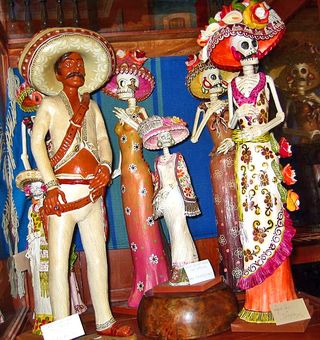
These catrínes de barro (clay) are tremendously elegant. They are the creations of acclaimed painter and bronze sculptor Juan Torres Calderón and his wife, clay sculptor Velia Torres Canals. The Torres couple work in Capula, Michoacán, where they started the tradition of clay catrines in the early 1960s.
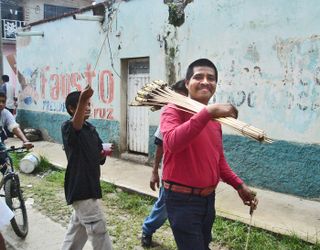
Cohetes (rockets) are another tradition for Día de los Muertos and other fiestas. Coheteros carry bundles of long-stick rockets in local processions, lighting one after another during the duration of the parade. The young boy walking behind the cohetero is carrying a pole to move electrical wires out of the way of the rockets. The intense boom! boom! boom! of the cohetes announces the arrival of the procession.
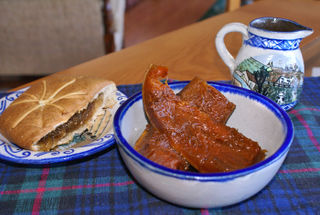
Calabaza en tacha (squash in syrup) is one of the most traditional foods for a Diá de los Muertos ofrenda (home or cemetery altar to honor the deceased). Learn its very simple preparation right here.

During the Día y Noche de Muertos fiesta, a loved one's grave becomes a place to pray, party, and reminisce. Candles, a glass of water to quench the deceased person's thirst, a bottle of his or her favorite liquor, and favorite foods such as mole or tamales, pan de muertos, calabaza en tacha, and seasonal fresh fruits are always placed on the grave.
During this very Mexican, very special festival, the dead–at least in spirit–pay a visit to their loved ones here on earth. It's a mutual nostalgia: the living remember the dead, and the dead remember the taste of home.

An acquaintance in Pátzcuaro dedicated this very large ofrenda (offering, or altar) to his deceased parents and other family members. The colors, the candles, the foods, the photos, and the flowers are all part of the old traditional altar decoration.
Next week, Mexico Cooks! will take you to one of the most important cemeteries in Mexico for a last look at the special Michoacán traditional commemoration of Noche de los Muertos 2009.
Looking for a tailored-to-your-interests specialized tour in Mexico? Click here: Tours.
Leave a Reply